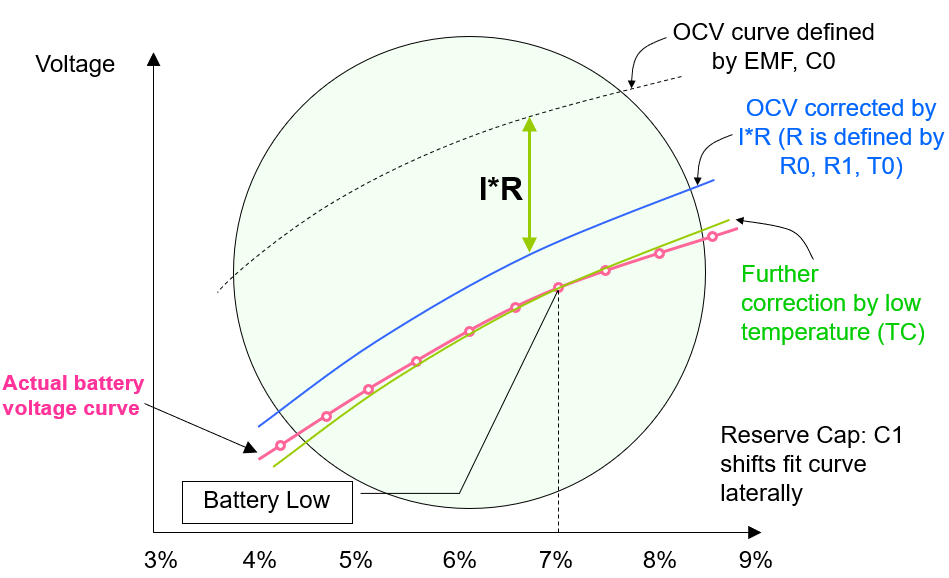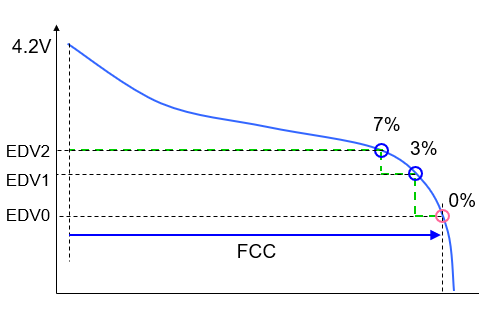SLUAAR3 December 2023 BQ27426 , BQ27427 , BQ27Z561 , BQ27Z746 , BQ28Z610 , BQ34Z100 , BQ40Z50 , BQ40Z80
5 CEDV
CEDV is an algorithm that uses coulomb counting as the backbone of the gauging. CEDV algorithm mathematically models cell voltage as a function of the battery’s SOC, temperature, and current. The battery voltage model is used to calibrate full-charge capacity (FCC), and a compensated battery voltage is used for end-of-discharge alarms and when the gauge reports 0% SOC. This algorithm uses specific parameters that is different for each battery, and these parameters can be gathered through the GPCCEDV tool.
 Figure 5-1 CEDV Parameters
Figure 5-1 CEDV ParametersFigure 5-1 is a visual representation of the parameters for CEDV. Parameters EMF and C0 define the function OCV(SoC, T). Parameters R0, R1, and T0 define R(SoC, T). R1 defines the slope of R(SoC) dependence. R0 defines the magnitude of R. T0 defines the slope of R(T) dependence.
The gauge needs to learn before being fully discharged. Therefore, the gauge has set voltage threshold that corresponds to a given percentage of remaining capacity. These parameters are EDV2, EDV1, and EDV0 and are usually set at 7%, 3% and 0% respectively. The parameters are set towards the end of discharge for a battery because there is a greater difference in voltage between SOC points, which allows error in voltage readings to minimize the error in SOC calculation. Lastly, learning of the new FCC after a change of temperature and rate of discharge occurs only at the EDV2 point. Thus, an abrupt SOC drop can occur before the end of discharge, sometimes up to 50% if the temperature is low and the rate of discharge is high.
 Figure 5-2 EDV Thresholds
Figure 5-2 EDV ThresholdsCEDV improves on the gauging accuracy of Voltage + IR Correction algorithm. CEDV improves on coulomb counting by estimating the initial capacity of a battery by reading the voltage and correlating this to a 10-point voltage table at device reset. Some issues include that self-discharge can affect accuracy, and full discharge of the battery is needed to learn the FCC which is required for accurate SoH and SOC estimations.
CEDV is able to report remaining run time. CEDV is also able to report the SoH and Remaining Capacity at the end of discharge, and SOC is able to be adjusted for discharge rate and temperature towards the end of discharge. However, unlike Voltage + IR Correction, CEDV can not report the remaining capacity in terms of watt-hour. A downside to CEDV is that aging of the battery can make the internal impedance of the battery underestimated, which can result in 15% - 25% error in Full Charge Capacity and SOC for aged batteries.